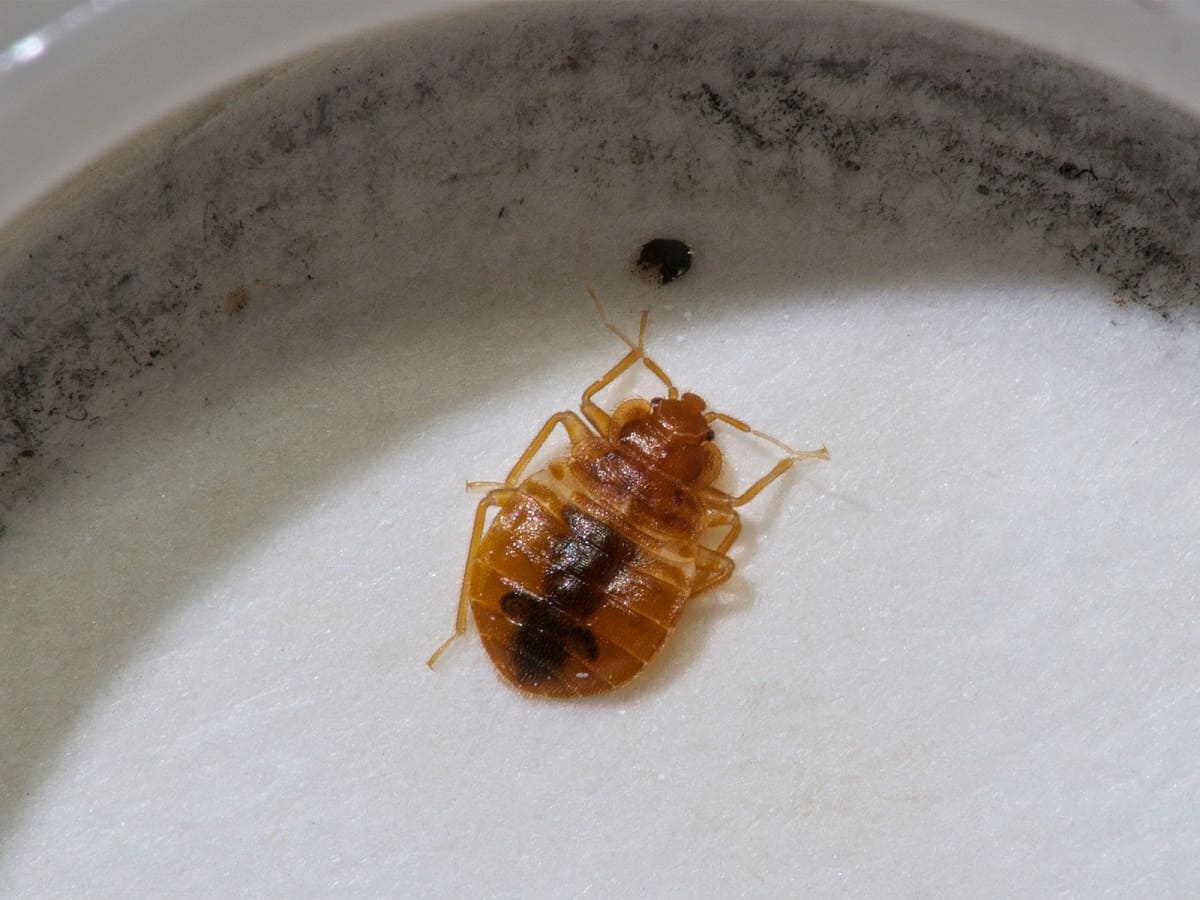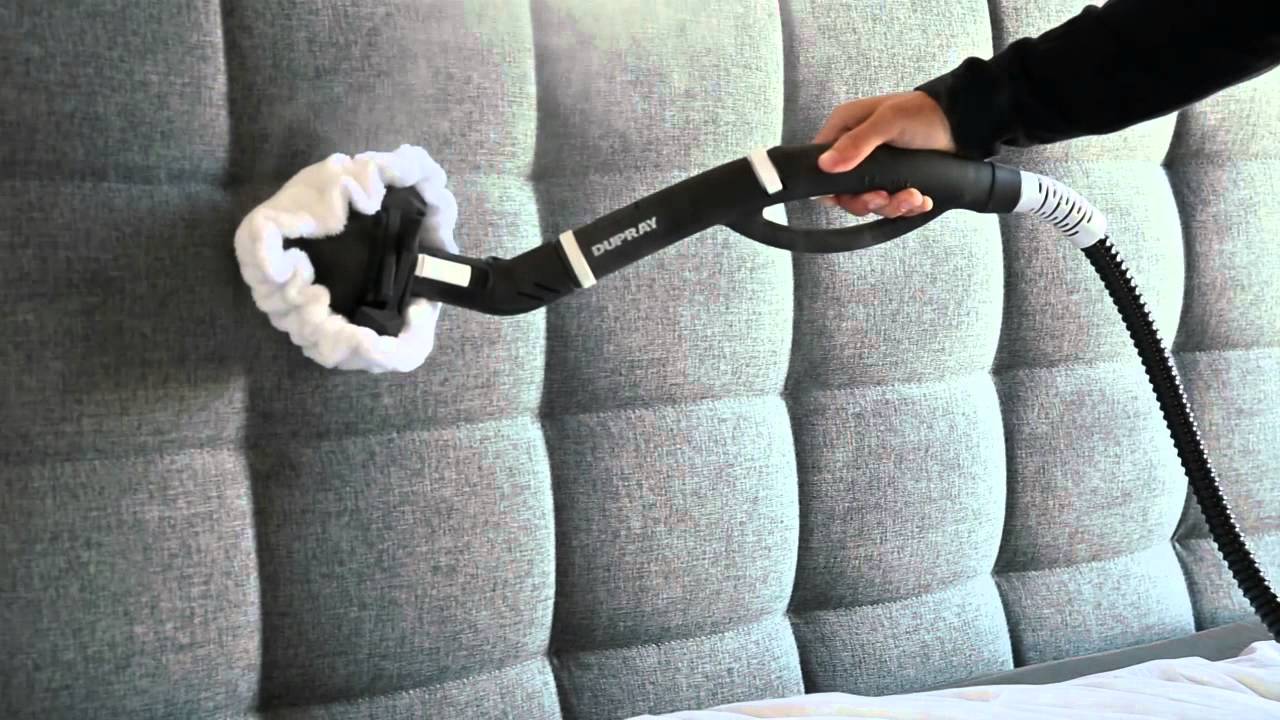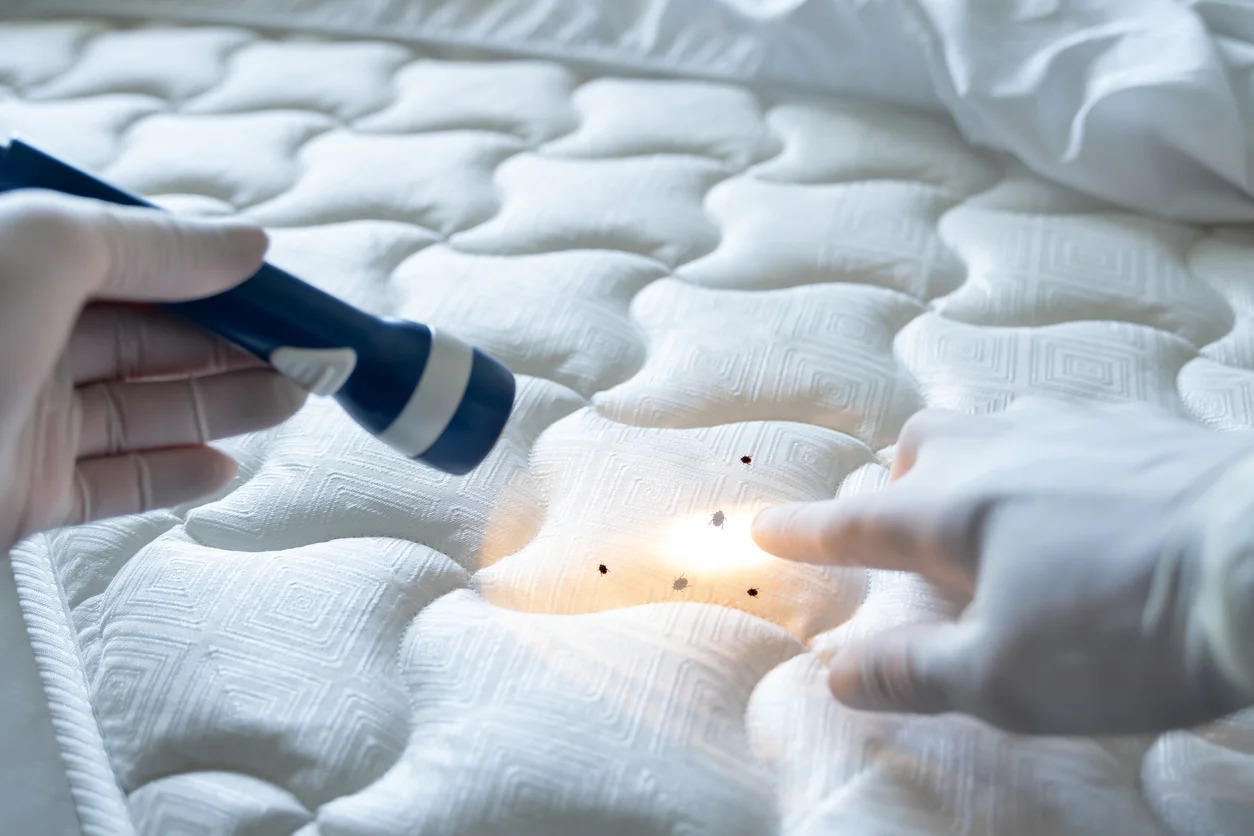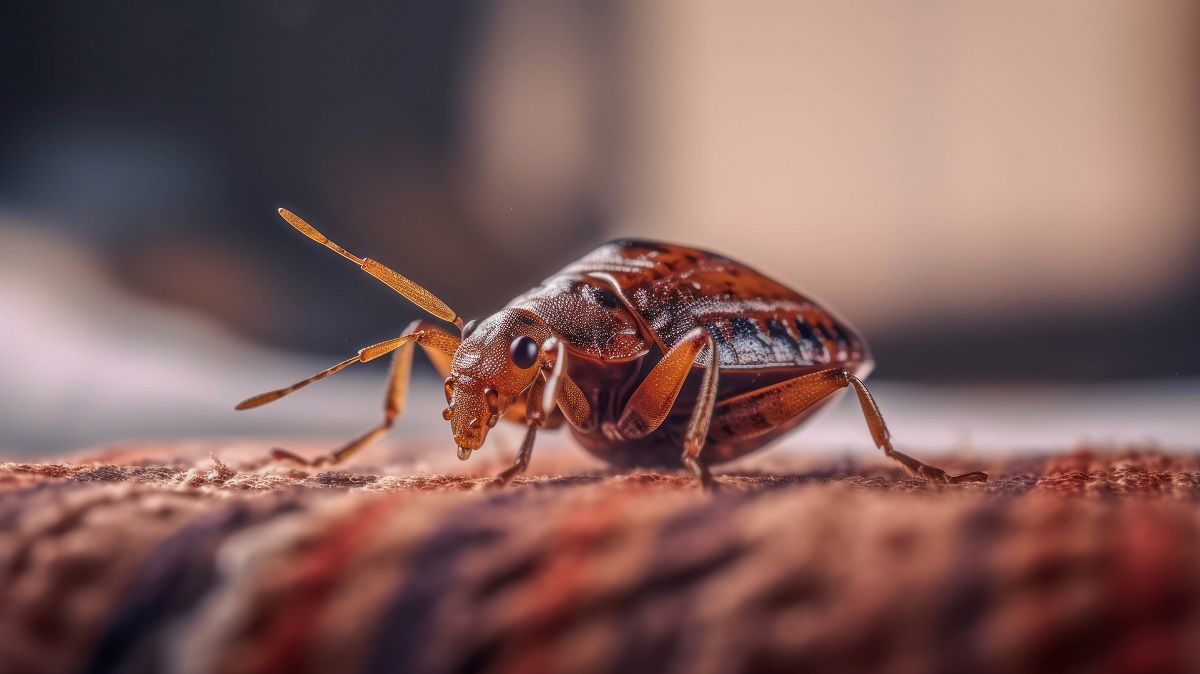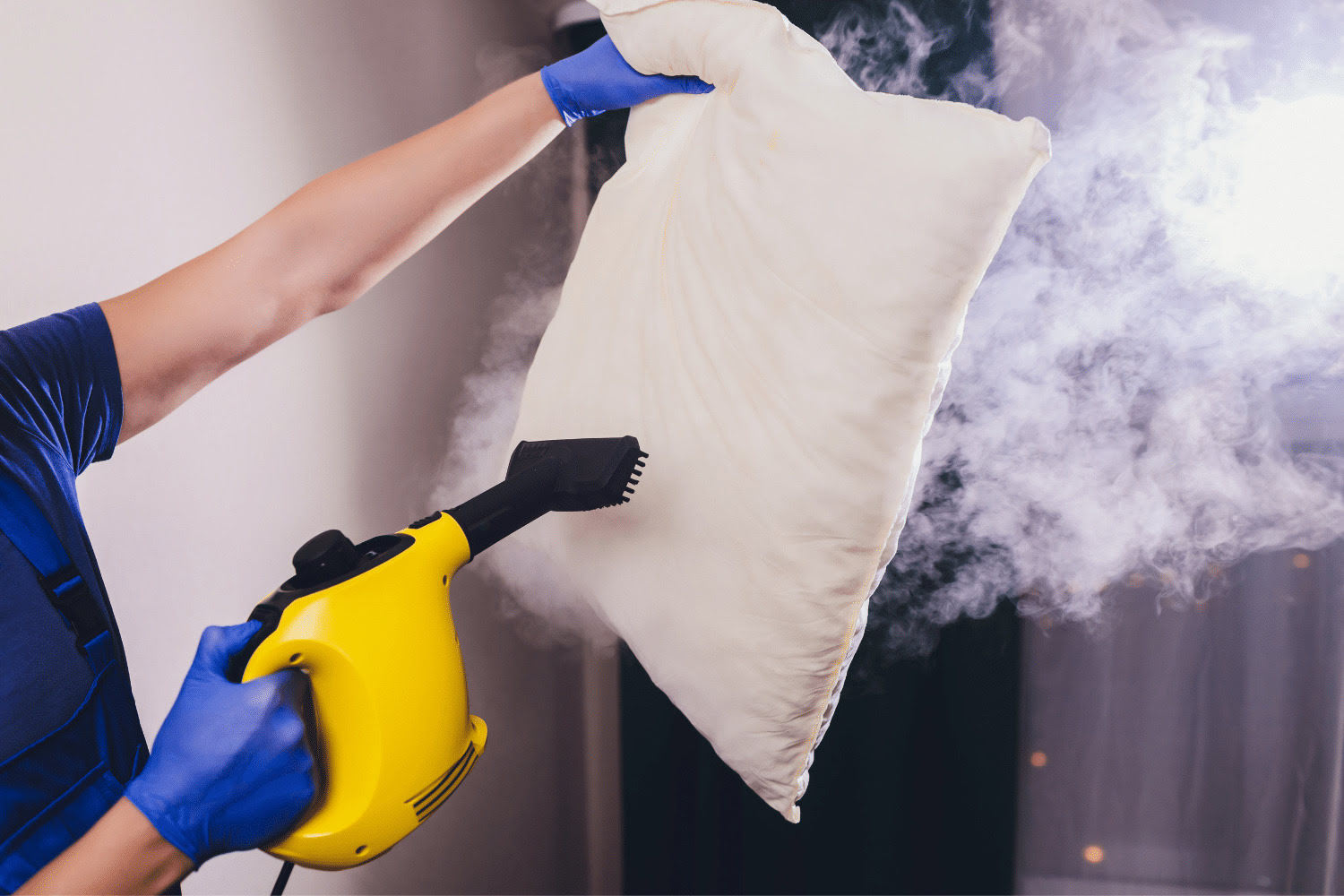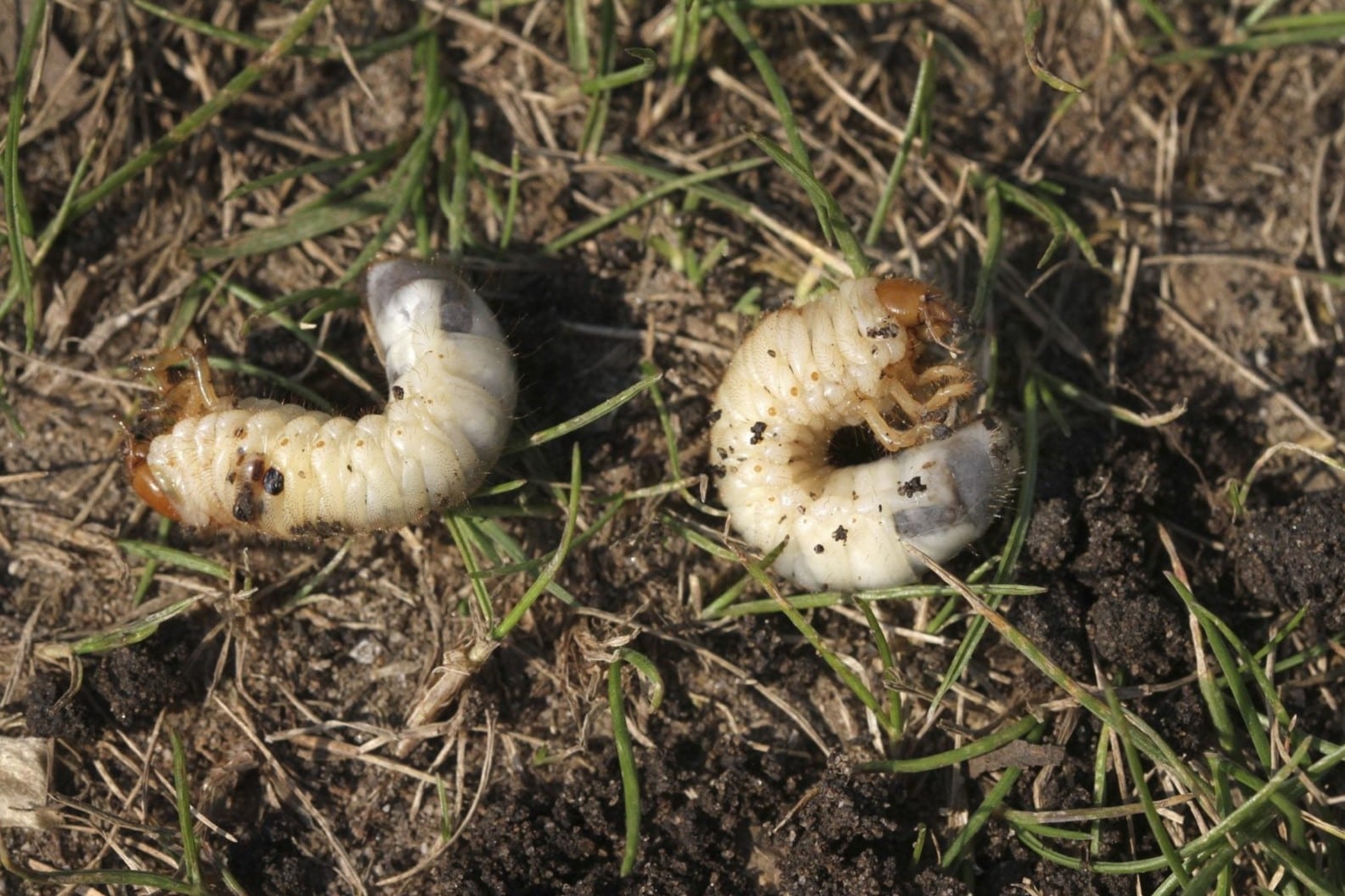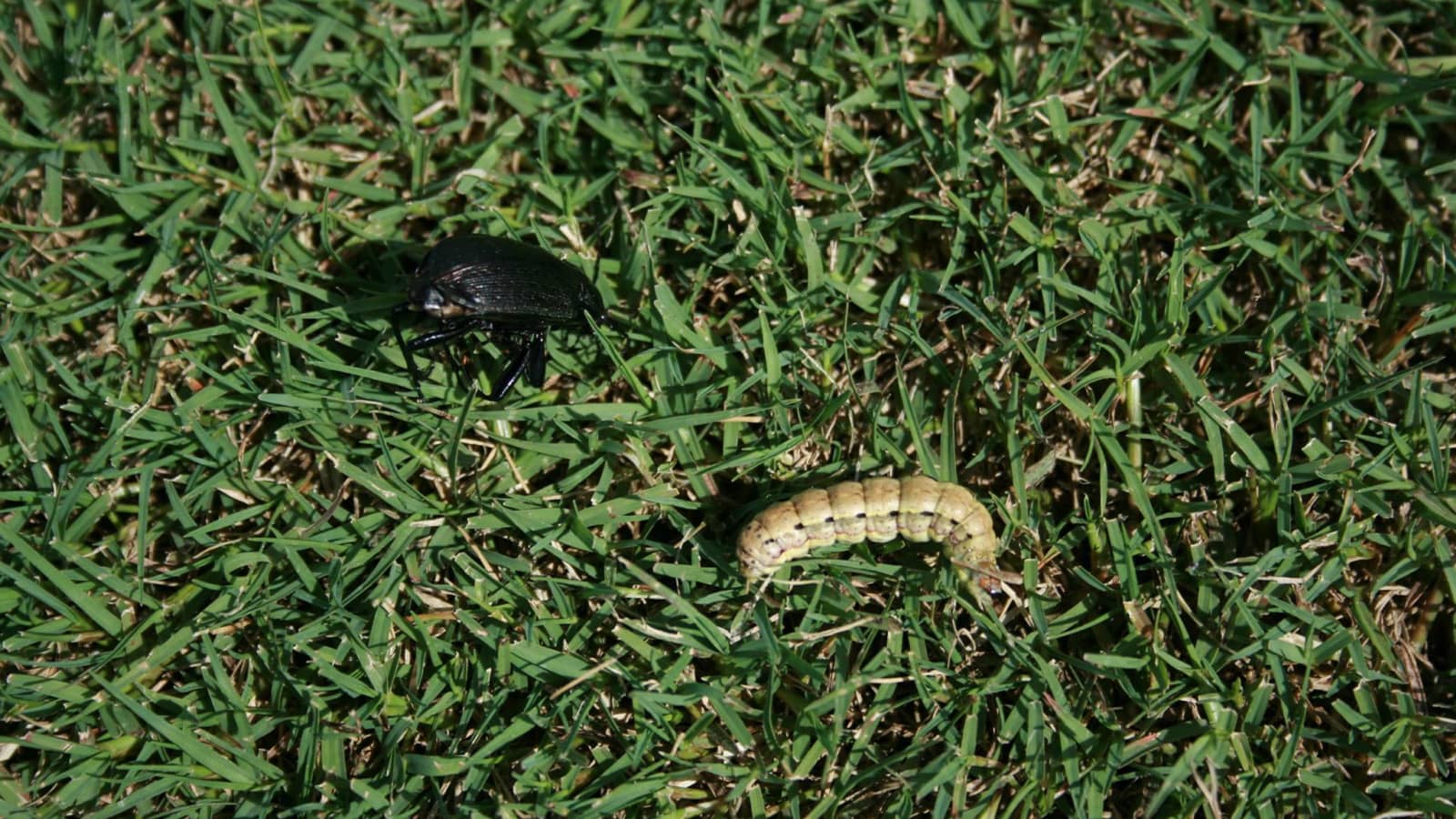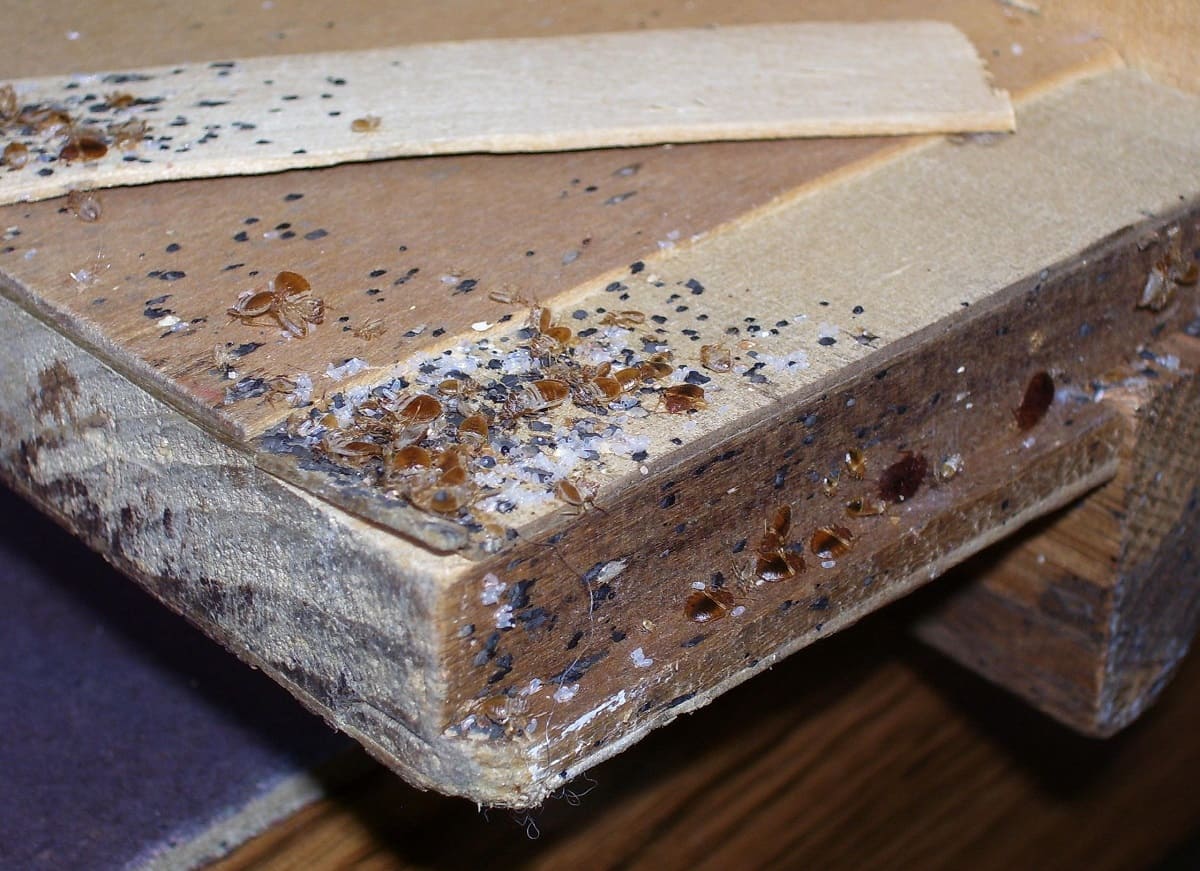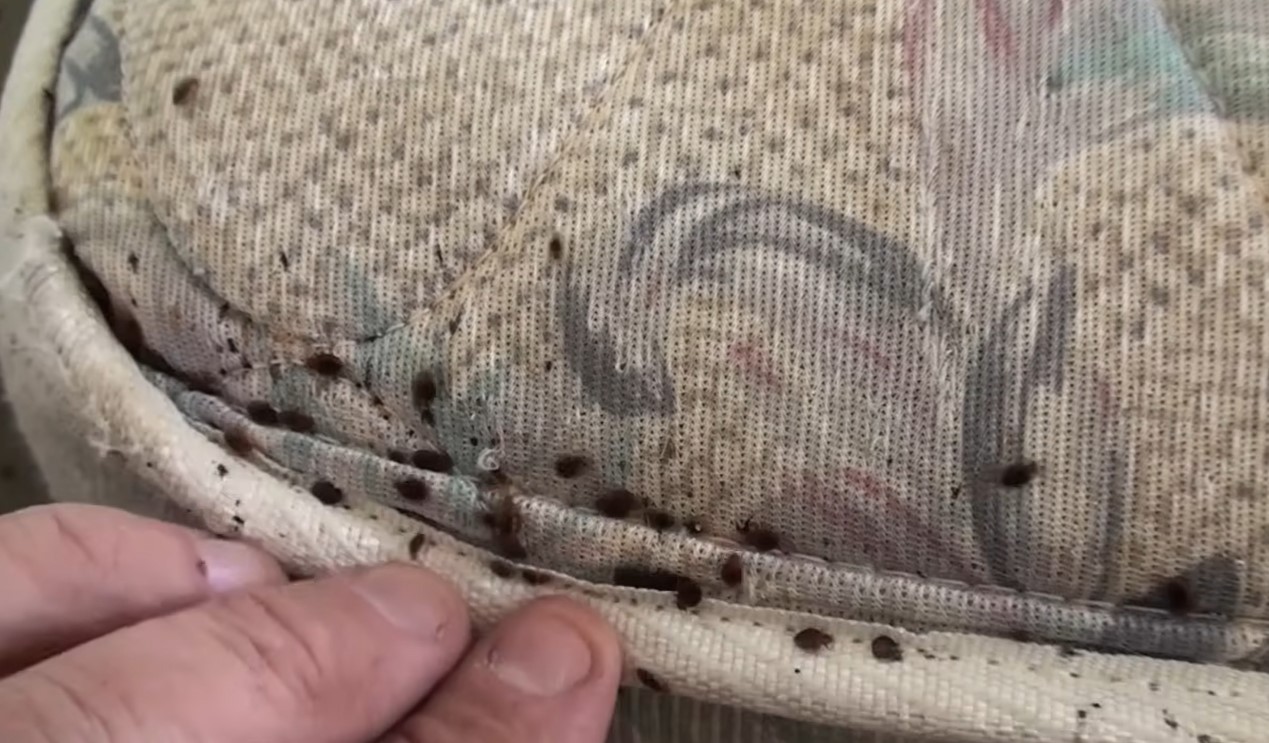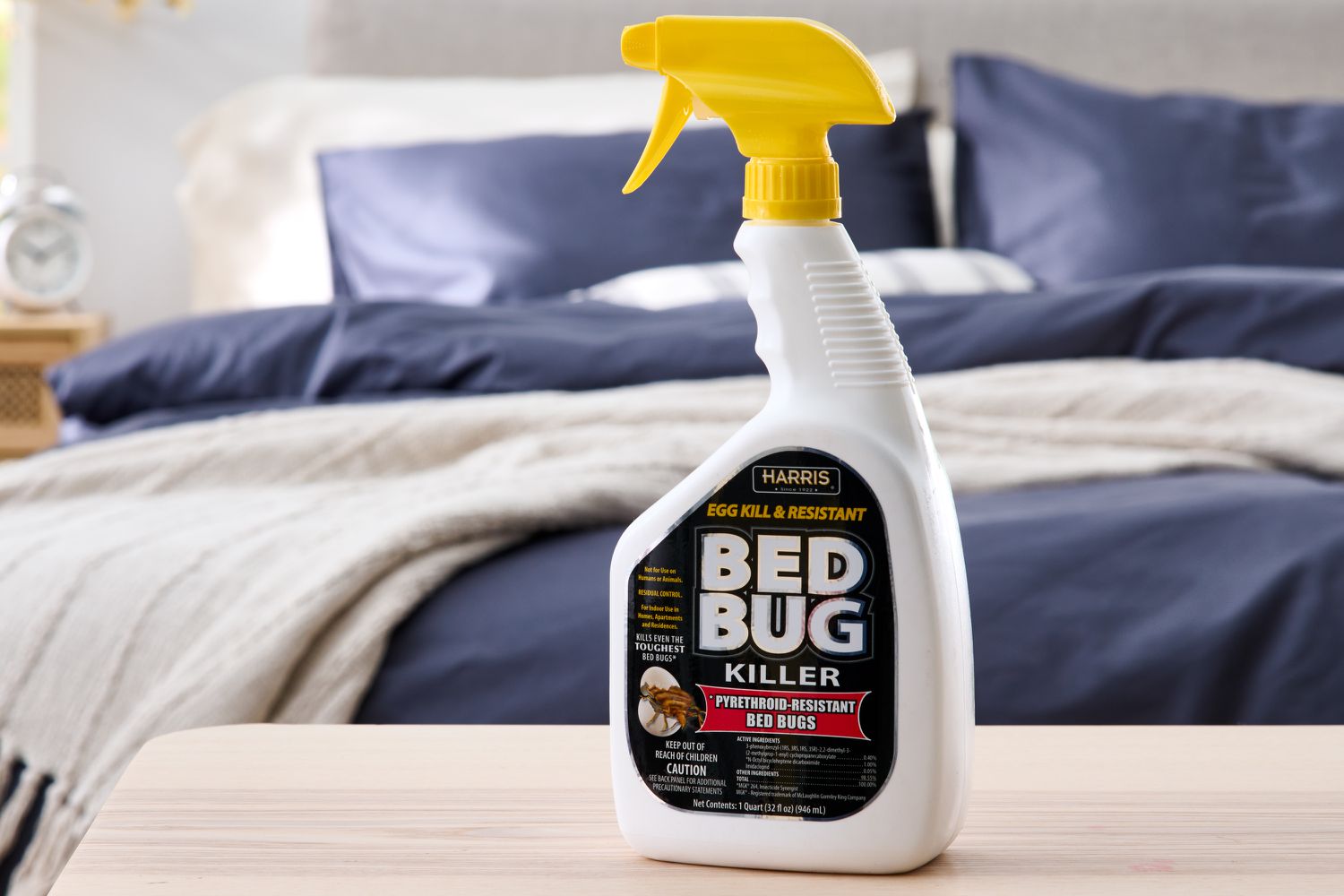Home>Furniture>Bedroom Furniture>What Chemicals Kill Bed Bugs
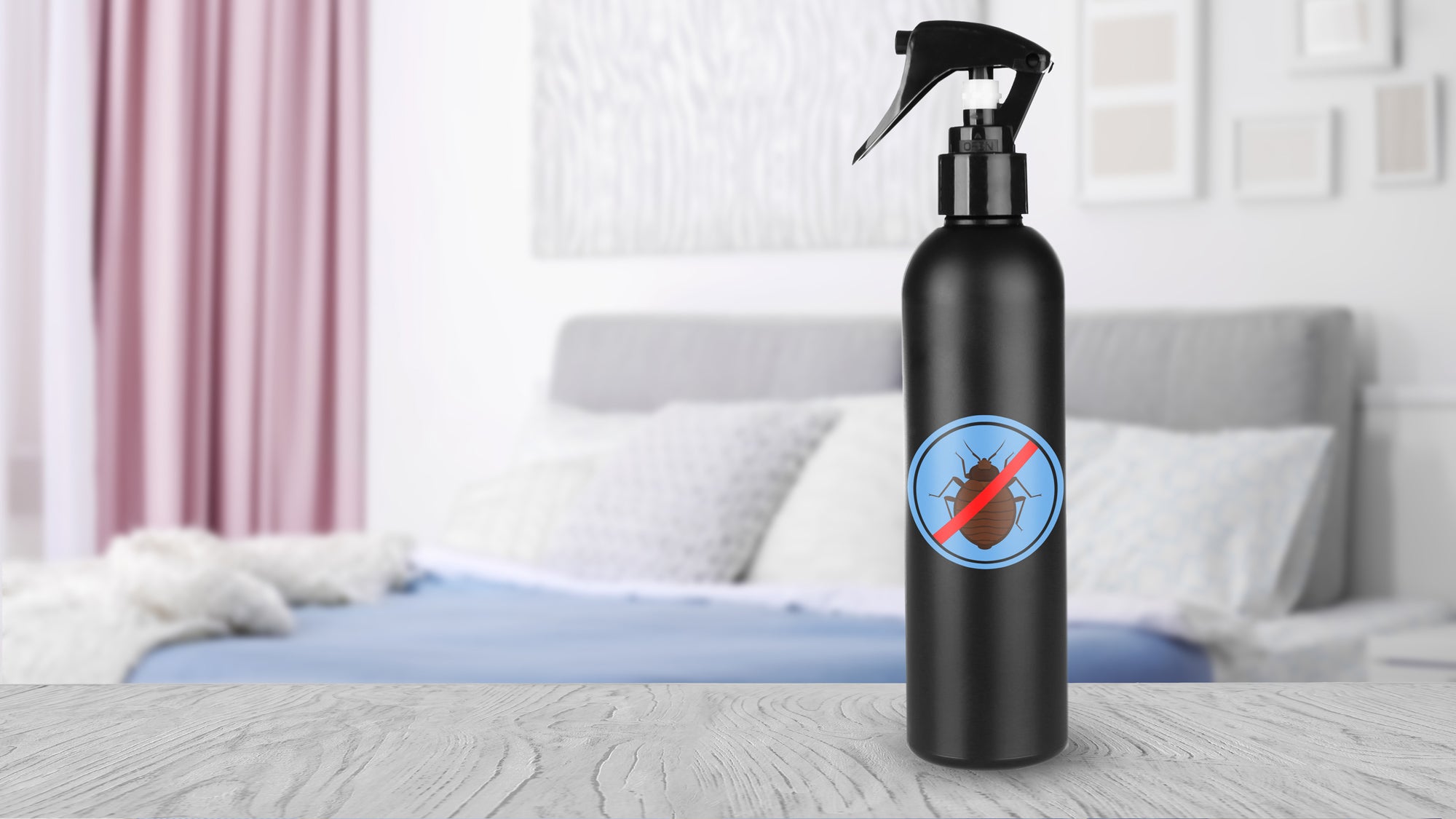

Bedroom Furniture
What Chemicals Kill Bed Bugs
Modified: January 9, 2024
Looking for ways to get rid of bed bugs? Discover effective chemicals that can eliminate bed bugs from your bedroom furniture. Prevent infestation and sleep peacefully.
(Many of the links in this article redirect to a specific reviewed product. Your purchase of these products through affiliate links helps to generate commission for Storables.com, at no extra cost. Learn more)
Introduction
Bed bugs are small, parasitic insects that infest homes and can cause significant distress and discomfort. These pesky creatures feed on human blood, typically at night while their victims are asleep. If you have ever had the unfortunate experience of dealing with a bed bug infestation, you know how challenging it can be to eradicate these persistent pests.
While there are various methods to eliminate bed bugs, using chemicals is one of the most effective approaches. Chemical treatments offer targeted and potent solutions that can eradicate bed bugs at all stages of their life cycle.
In this article, we will explore different types of chemicals used for killing bed bugs and discuss their effectiveness. Whether you are dealing with a minor bed bug problem or a full-blown infestation, understanding the available options can help you choose the most suitable treatment for your situation. Let’s dive in!
Key Takeaways:
- Chemical treatments like pyrethroids, neonicotinoids, and insect growth regulators offer effective ways to kill bed bugs at all life stages, but a comprehensive approach combining multiple methods is often necessary for complete eradication.
- Professional assistance is recommended for heat and cold treatments, as these methods require specialized equipment and expertise to ensure thorough and effective elimination of bed bugs.
Read more: What Temperature Kills Bed Bugs
Understanding Bed Bugs
Before delving into the various chemicals used to kill bed bugs, it is crucial to have a basic understanding of these unwelcome intruders. Bed bugs, scientifically known as Cimex lectularius, are small, flat, oval-shaped insects that measure around 5 to 7 millimeters in length. They are reddish-brown in color and have a distinct odor that is often described as musty or sweet.
Bed bugs are notorious for their ability to hitch a ride on clothing, luggage, or furniture and infest homes, hotels, and other dwellings. Contrary to popular belief, bed bugs are not a sign of uncleanliness. They can thrive in any environment, as long as they have access to a blood meal. Bed bugs are primarily active at night and are attracted to body heat and carbon dioxide emitted by humans.
These resilient pests can hide in cracks, crevices, mattress seams, furniture, and other tight spaces during the day, making them incredibly challenging to detect and eliminate. They reproduce quickly, with each female capable of laying hundreds of eggs in her lifetime.
Bed bug bites can lead to itching, discomfort, and allergic reactions in some individuals. While they are not known to transmit diseases, the psychological toll of dealing with a bed bug infestation can be significant.
Now that we have a better understanding of bed bugs let’s explore the different chemicals used to effectively eliminate these unwelcome guests.
Chemicals for Killing Bed Bugs
When it comes to eradicating bed bugs, there are several different types of chemicals that have proven to be effective. These chemicals target the bed bugs’ nervous system, reproductive cycle, or their ability to survive in various environmental conditions. Let’s take a closer look at some of the commonly used chemicals:
- Pyrethroids: Pyrethroids are a class of insecticides derived from natural compounds found in chrysanthemum flowers. These chemicals work by disrupting the bed bugs’ nervous system, leading to paralysis and eventual death. Pyrethroids are commonly used in both professional and do-it-yourself bed bug treatments due to their effectiveness.
- Neonicotinoids: Neonicotinoids are a relatively new class of insecticides that act on the bed bugs’ nervous system, causing paralysis and ultimately leading to their demise. These chemicals have low toxicity to mammals, making them a popular choice for bed bug control.
- Insect Growth Regulators (IGRs): IGRs are chemicals that disrupt the bed bugs’ growth and reproductive cycle, preventing them from maturing into adults and reproducing. These chemicals have a long-lasting effect and can help in controlling the infestation by targeting both the adult bed bugs and their eggs.
- Desiccants: Desiccants are substances that cause dehydration in bed bugs. These chemicals work by absorbing the waxy outer layer of the insects, leading to dehydration and death. Desiccants are an effective option for eliminating bed bugs hiding in hard-to-reach areas and cracks and crevices.
- Biopesticides: Biopesticides are derived from natural sources such as fungi, bacteria, or plant extracts. They offer a more environmentally friendly approach to bed bug control. Biopesticides work by attacking the bed bugs’ exoskeleton, digestive system, or reproductive organs.
- Cold Treatment: Exposing bed bugs to extreme cold temperatures can also be an effective method of eradication. Cryonite, a carbon dioxide snow, is used to freeze the insects, causing instant death. This method is especially useful for treating items that cannot withstand heat treatment.
- Heat Treatment: Heat treatment involves raising the temperature of infested areas to a level that is lethal to bed bugs. This method can be highly effective in killing bed bugs and their eggs. Professional heat treatment eliminates the need for chemical application and can reach even the smallest crevices and hiding spots.
Please note that when using any chemical treatments, it is crucial to carefully follow the instructions provided by the manufacturer or consult a professional pest control expert to ensure safety and effectiveness.
Now that we have explored the various chemicals used for killing bed bugs, you can make an informed decision on which treatment method may best suit your needs. Remember, it is important to consider the severity of the infestation, the safety of the chemicals, and your personal circumstances before proceeding with any bed bug treatment.
Pyrethroids
Pyrethroids are a class of insecticides commonly used for killing bed bugs. They are derived from natural compounds found in chrysanthemum flowers, making them a somewhat natural option for pest control. Pyrethroids work by disrupting the nervous system of bed bugs, leading to paralysis and eventual death.
One of the advantages of pyrethroids is their effectiveness against a wide range of pests, including bed bugs. They provide quick knockdown of bed bugs, helping to reduce the infestation rapidly. Pyrethroids are available in various forms, including sprays, powders, aerosols, and even bed bug bombs.
It is important to note that while pyrethroids are generally considered safe for humans and pets when used according to the instructions, some individuals may have sensitivities or allergies to these chemicals. Therefore, it is always recommended to take necessary precautions, such as wearing gloves and a mask, and ensuring proper ventilation during and after application.
However, it is important to be aware that bed bugs can develop resistance to pyrethroids over time. Continuous and prolonged use of pyrethroid-based products may lead to decreased efficacy against bed bugs. To address this issue, rotating different classes of insecticides or combining treatments with other methods, such as heat or cold treatment, may be necessary.
When using pyrethroid-based products, it is essential to thoroughly read and follow the instructions provided by the manufacturer. Pay attention to specific recommendations for bed bug treatment, including proper application techniques and areas of focus. Additionally, it is crucial to treat all potential hiding spots, including cracks, crevices, and furniture, to ensure maximum effectiveness.
While pyrethroids can be effective in killing bed bugs, it is worth noting that they may not eliminate the entire infestation on their own. Bed bugs have a remarkable ability to hide in tiny cracks and crevices, making it challenging to reach and treat every hiding spot. As such, a comprehensive approach that combines multiple strategies, such as vacuuming, laundering infested items, and sealing cracks, may be necessary for complete eradication.
Overall, pyrethroids are a popular choice for bed bug control due to their potency and effectiveness. However, it is essential to consider factors like resistance development and the need for multiple treatment methods to ensure a successful elimination of the infestation.
Neonicotinoids
Neonicotinoids are a relatively new class of insecticides that have gained popularity for their effectiveness in controlling various pests, including bed bugs. These chemicals target the nervous system of insects, causing paralysis and ultimately leading to their demise.
One of the advantages of neonicotinoids is their low toxicity to mammals, making them a safer option for bed bug control. They are available in different formulations, such as sprays, dusts, and even systemic treatments for plants. Neonicotinoids provide a broad-spectrum control, effectively eliminating bed bugs at all stages of their life cycle, including eggs, nymphs, and adults.
When using neonicotinoid-based products, it is crucial to carefully follow the instructions provided by the manufacturer. Apply the insecticide in areas where bed bugs are present, such as cracks, crevices, and bed frames. Additionally, ensure proper ventilation during and after application to minimize exposure to the insecticide.
Neonicotinoids have been found to be effective in killing bed bugs, even those that may have developed resistance to other types of insecticides. However, like other chemical treatments, overreliance on neonicotinoids may lead to resistance development over time. Therefore, it is advisable to rotate between different classes of insecticides or combine treatments with other control methods for optimal results.
It is important to note that while neonicotinoids are generally considered safe for humans and pets, certain precautions should be taken. Avoid direct contact with the insecticide, and keep treated areas off-limits for a specified period as indicated on the product label. This will allow the insecticide to work effectively and minimize any potential risks.
In addition to using neonicotinoids, a comprehensive approach to bed bug control is recommended. This may include vacuuming infested areas, laundering bedding and clothing, and sealing cracks and crevices to eliminate potential hiding spots. Combining different control methods increases the likelihood of successfully eradicating the infestation.
While neonicotinoids can be an effective option for bed bug control, it is essential to carefully consider your specific situation and follow the instructions to ensure safety and success. If you are unsure how to proceed or if the infestation persists, it is recommended to consult with a professional pest control expert who can provide specialized advice and assistance.
Read more: What Kills Bed Bugs And Their Eggs
Insect Growth Regulators (IGRs)
Insect Growth Regulators (IGRs) are chemicals commonly used for bed bug control that target the growth and reproductive cycle of these pests. Unlike other insecticides that kill bed bugs directly, IGRs work by disrupting their development, preventing them from reaching maturity and reproducing effectively.
IGRs are available in various forms, including liquids, aerosols, and powders. When applied, these chemicals inhibit the bed bugs’ ability to molt and develop properly, leading to deformities and ultimately death. IGRs are effective against both juvenile bed bugs and eggs, making them an essential component of a comprehensive bed bug control strategy.
One of the advantages of using IGRs is their long-lasting effect. While adulticide insecticides primarily target the adult bed bugs, IGRs provide residual control by preventing the eggs and nymphs from developing into adults. This can help break the bed bug life cycle and significantly reduce the population over time.
When using IGRs for bed bug control, it is important to follow the instructions provided by the manufacturer. Treat all areas where bed bugs are present, including cracks, crevices, and areas where they are likely to hide, such as mattress seams and furniture joints.
It is worth noting that IGRs alone may not eliminate an entire bed bug infestation. Combining IGR treatments with other control methods, such as vacuuming, steaming, and sealing cracks and crevices, is recommended for comprehensive eradication.
IGRs are considered relatively safe for humans and pets when used according to the instructions. However, as with any chemical treatment, it is advisable to take appropriate precautions, such as wearing gloves and avoiding direct contact with the product.
It is important to be patient when using IGRs for bed bug control. It may take several weeks or months to see a significant reduction in the bed bug population due to their prolonged effect on the insects’ life cycle. Consistency and persistence are key when using IGRs as part of an integrated pest management approach for bed bug control.
If you are unsure about using IGRs or if the infestation persists despite treatment, it is recommended to seek professional assistance. Pest control experts have the knowledge and experience to properly assess the situation and provide effective solutions tailored to your specific needs.
By incorporating IGRs into your bed bug control strategy, you can disrupt the bed bugs’ reproductive cycle and significantly reduce the population over time, leading to successful elimination of the infestation.
When dealing with a bed bug infestation, look for chemicals that contain ingredients such as pyrethroids, neonicotinoids, or desiccants, as these have been found to effectively kill bed bugs. Always follow the instructions on the product label and consider seeking professional help for severe infestations.
Desiccants
Desiccants are chemicals that work by dehydrating bed bugs and causing them to die. These substances are often in the form of powders or dusts and are applied to areas where bed bugs hide or frequently travel.
Unlike insecticides that target the nervous system or growth cycle of bed bugs, desiccants physically degrade the pests’ outer waxy layer, leading to excessive moisture loss and death. Desiccants are effective against bed bugs at all stages of their life cycle, including eggs, nymphs, and adults.
One of the advantages of desiccants is their long-lasting effect. Once applied, desiccants remain active for an extended period, providing a continuous barrier against bed bugs. This makes them particularly useful in hard-to-reach areas, cracks, crevices, and wall voids where bed bugs may hide.
Compared to liquid insecticides, desiccants offer a more natural and low-toxicity approach to bed bug control. They are generally considered safe for humans and pets when used as directed. However, it is important to avoid direct skin contact and inhalation of the dust during application.
When using desiccants, it is crucial to thoroughly treat all infested areas and follow the instructions provided by the manufacturer. Apply the desiccant in small amounts, targeting specific areas where bed bugs are present or likely to travel. Be mindful of avoiding excessive dust build-up, as this can be a health hazard and make the treatment less effective.
While desiccants can be effective in killing bed bugs, it is worth noting that they may not provide immediate results. Bed bugs may take some time to come into contact with the desiccant and succumb to its dehydrating effect. Therefore, desiccants are often used as part of a comprehensive approach that includes other control methods, such as vacuuming, sealing cracks, and laundering infested items.
In severe bed bug infestations, professional application of desiccants may be necessary to ensure thorough and effective treatment. Pest control professionals have the experience and knowledge to identify key areas of infestation and apply the desiccant in a way that maximizes its effectiveness.
Overall, desiccants offer a unique and effective approach to bed bug control by physically dehydrating the pests. By using desiccants in conjunction with other control methods, you can increase the likelihood of a successful and long-lasting eradication of the bed bug infestation.
Biopesticides
Biopesticides are a type of pesticide derived from natural sources, such as fungi, bacteria, or plant extracts. These eco-friendly alternatives offer a more sustainable approach to bed bug control and are often considered safe for humans and pets.
In the case of bed bugs, biopesticides work by targeting the pests’ exoskeleton, digestive system, or reproductive organs, leading to their death. They can be effective against both adult bed bugs and their eggs, helping to reduce the infestation and prevent future breeding.
One of the advantages of biopesticides is their low toxicity to non-target organisms. They typically have minimal impact on beneficial insects, mammals, and the environment, making them a favorable choice for homeowners and professionals concerned about the ecological footprint of their pest control efforts.
Biopesticides are available in different forms, including sprays, dusts, and concentrates. When using biopesticides for bed bug control, it is important to carefully read the product label and follow the provided instructions. Depending on the formulation, biopesticides may require multiple treatments to achieve optimal results.
While biopesticides can be effective in killing bed bugs, it is important to note that they may not provide immediate results. These products usually require time to work, and multiple applications might be necessary to target bed bugs at different stages of their life cycle.
It is worth mentioning that biopesticides may have a specific mode of action and target a particular pest species. Therefore, it is essential to choose a biopesticide specifically formulated for bed bug control. Consulting with a pest control professional or knowledgeable retailer can help ensure you select the most appropriate biopesticide for your needs.
As with any pesticide, it is crucial to use biopesticides carefully and according to the instructions provided. While they are generally considered safe, it is still important to take precautions, such as using protective gear during application, avoiding direct contact with the skin or eyes, and ensuring proper ventilation.
If you are unsure about using biopesticides on your own or if the bed bug infestation persists despite treatment, it is advisable to consult with a professional pest control expert. They can provide guidance on the most suitable biopesticide options and help create a comprehensive bed bug control plan tailored to your specific situation.
Overall, biopesticides offer a safer and more environmentally friendly alternative for bed bug control. By incorporating biopesticides into your pest management strategy, you can effectively target and eliminate bed bugs while minimizing the impact on the ecosystem.
Cold Treatment
Cold treatment is an effective method for killing bed bugs by exposing them to extreme cold temperatures. This approach is particularly useful for items that cannot withstand heat treatment, such as electronics, delicate fabrics, and certain furniture pieces.
The most common cold treatment method involves using carbon dioxide snow, also known as cryonite. Cryonite is a non-toxic, dry ice snow that freezes bed bugs upon contact, causing instant death. The extreme cold temperature of cryonite (-78°C/-108°F) eliminates bed bugs at all life stages, including eggs, nymphs, and adults.
Cold treatment offers several advantages. It is a chemical-free and environmentally friendly alternative, making it appealing to those seeking non-toxic solutions. Additionally, cold treatment can reach even the smallest cracks and crevices where bed bugs may hide, ensuring thorough eradication.
When conducting cold treatment, it is important to direct the carbon dioxide snow directly onto the areas where bed bugs are present. Care should be taken to treat all potential hiding spots, including mattress seams, furniture joints, and wall voids. It is worth noting that cryonite is not effective as a residual treatment and only acts upon direct contact.
Cold treatment is typically best performed by trained professionals who have the necessary equipment and expertise to handle cryonite safely. They can identify the infested areas accurately and ensure proper application. Professional cold treatment not only maximizes the effectiveness of the treatment but also reduces the risk of potential hazards associated with handling carbon dioxide snow.
It is important to understand that cold treatment alone may not eliminate an entire bed bug infestation. Since cryonite only affects bed bugs upon contact, any surviving bugs that are not directly exposed to the carbon dioxide snow may remain and continue to reproduce. Therefore, it is recommended to combine cold treatment with other control methods, such as vacuuming, steaming, or applying residual insecticides.
While cold treatment can be an effective option for bed bug control, it is essential to assess the extent of the infestation and consult with a professional pest control expert. They can provide expert advice, evaluate the situation, and determine the most appropriate course of action to effectively eliminate the bed bug infestation.
By utilizing cold treatment in combination with other control measures, you can increase the likelihood of successfully eradicating bed bugs and regaining a pest-free environment.
Read more: What Kills Bed Bugs Permanently
Heat Treatment
Heat treatment is a highly effective method for eradicating bed bugs by exposing them to high temperatures that they cannot withstand. This approach is known for its ability to reach all areas of infestation, including cracks, crevices, and deep inside furniture, ensuring complete elimination of the pests.
The most common heat treatment method involves raising the temperature of the infested area to a level that is lethal to bed bugs, typically around 120 to 140°F (49 to 60°C). This is achieved using specialized heating equipment, such as steamers or heat chambers.
Heat treatment offers several advantages. Firstly, it is a non-chemical approach, making it safe for humans, pets, and the environment. Secondly, heat treatment is effective against bed bugs at all life stages, including eggs, nymphs, and adults. The high temperatures penetrate deep into furniture, mattresses, and other hiding spots, ensuring that all bed bugs and their eggs are exterminated.
Professional heat treatment is recommended for optimal results. Trained technicians have the expertise and specialized equipment to safely and efficiently raise the temperature of the infested area. They can accurately monitor the heat levels, ensure uniform distribution throughout the space, and cover all potential hiding spots.
It is important to prepare the area properly before heat treatment. This typically involves removing clutter, sealing cracks and crevices, and potentially laundering infested bedding and clothing. Following the specific instructions provided by the professionals is crucial to maximize the effectiveness of the treatment.
While heat treatment is highly effective, it is worth noting that it may not eliminate an infestation if all areas or items are not properly treated. Bed bugs can hide in various places, such as electrical sockets, picture frames, or inside walls. Therefore, comprehensive treatment that includes all potentially infested areas is essential to ensure complete eradication.
It is also important to consider the potential heat sensitivities of certain items, such as electronics or delicate fabrics. In such cases, alternative methods may need to be employed to prevent damage.
Heat treatment is a valuable tool for eradicating bed bugs, but it is recommended to consult with a professional pest control company to assess the specific situation and determine the most suitable approach. They can provide expert advice, evaluate the severity of the infestation, and tailor the heat treatment to your specific needs.
By employing heat treatment in conjunction with other control methods, you can effectively eliminate bed bugs and restore a comfortable, pest-free environment.
Conclusion
Dealing with a bed bug infestation can be a frustrating and challenging experience. These persistent pests can quickly multiply and thrive in various environments, causing discomfort and distress. Thankfully, there are several effective methods available for killing bed bugs and regaining control of your home.
In this article, we explored different chemicals and treatments commonly used for bed bug control. Pyrethroids, neonicotinoids, insect growth regulators, desiccants, biopesticides, cold treatment, and heat treatment all offer unique benefits and approaches to eliminate bed bugs.
Chemical treatments like pyrethroids and neonicotinoids target the bed bugs’ nervous system, insect growth regulators disrupt their development, desiccants dehydrate them, and biopesticides use natural sources to attack the pests. Cold treatment involves freezing bed bugs, while heat treatment employs raising the temperature to lethal levels for the insects.
It is important to note that no single method may completely eradicate an entire bed bug infestation. A comprehensive approach is often necessary to maximize effectiveness. This may include combining chemical treatments with non-chemical methods, such as vacuuming, steaming, laundering infested items, and sealing cracks and crevices.
Professional assistance is highly recommended, particularly for heat and cold treatments, as trained technicians have the specialized equipment and knowledge to apply these methods safely and effectively.
When using any chemicals for bed bug control, it is crucial to carefully read and follow the manufacturer’s instructions. Take precautions to protect yourself, pets, and the environment. Rotate between different classes of insecticides to prevent resistance development over time.
Remember, patience is key when dealing with bed bugs. It may take multiple treatments and a combination of methods to completely eliminate an infestation. Regular monitoring and preventive measures, such as frequent cleaning and sealing potential entry points, can help prevent future bed bug problems.
In conclusion, by understanding the various chemicals and treatment options available, you can make informed decisions on the best approach to kill bed bugs and prevent their return. Whether you choose to utilize pyrethroids, neonicotinoids, IGRs, desiccants, biopesticides, cold treatment, heat treatment, or a combination, taking action and seeking professional assistance when needed will help you reclaim your home from these frustrating pests.
Frequently Asked Questions about What Chemicals Kill Bed Bugs
Was this page helpful?
At Storables.com, we guarantee accurate and reliable information. Our content, validated by Expert Board Contributors, is crafted following stringent Editorial Policies. We're committed to providing you with well-researched, expert-backed insights for all your informational needs.
